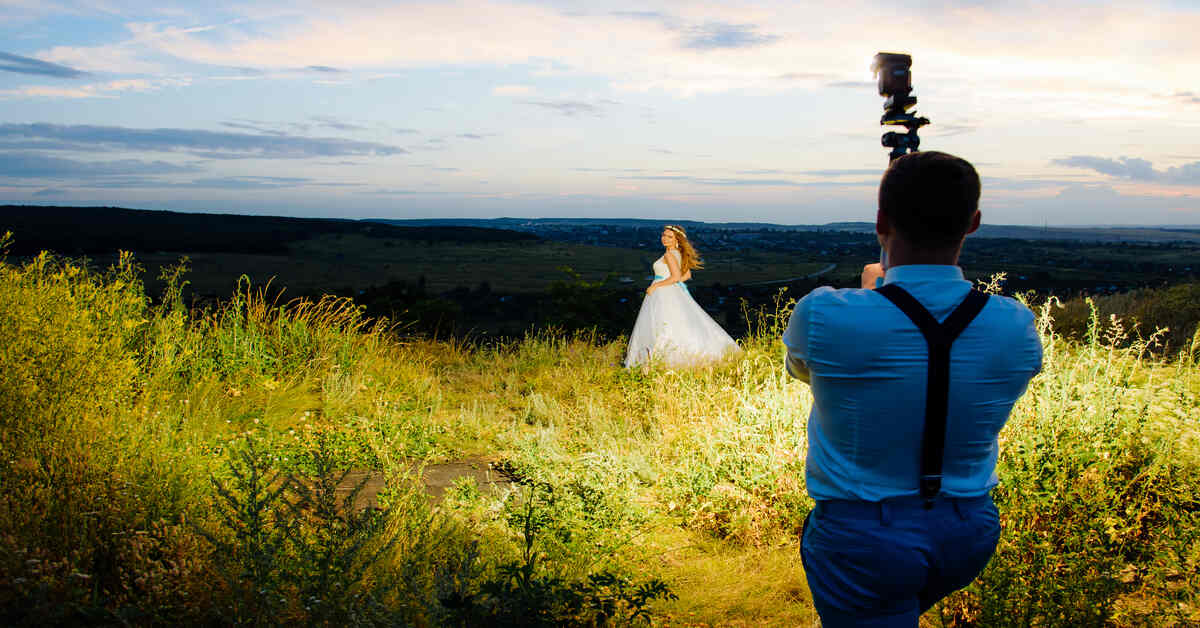Wedding filmmaking can be considered one of the most emotional, hard, and fulfilling types of storytelling. The fact that you as a filmmaker are capturing an event only means that you are capturing a memory that a couple will revisit decades later. One frame narrates a story of love with vows and laughter, stolen glances, and celebrations.
Even when you have no experience in this craft, there is no cause to fear because with proper attitude, planning and creativity, you will have the capability of capturing the big day of a couple just as a professional would. This is the ultimate beginner guide to wedding filmmaking with the tips that are essential to ensure that you are up and running.
1. Understand the Power of Storytelling
Creating cinematic wedding videos is not only about the things that happened but also about the way they felt. Storytelling provides emotion, rhythm and meaning to your shots.
Each couple has a story: how they got to know each other, their character, and what is unique about their relationship. Take pictures of such emotions, a nervous smile, or a whispered I love you or a dance with family.
When editing, structure your film like a story:
- Introduction: Getting ready, atmosphere, and anticipation.
- Climax: The ceremony and vows.
- Resolution: The joy of the reception.
That simple arc keeps your audience emotionally engaged from start to finish.
2. Scout the Venue Early
Each location offers various lighting and space limitations and sound issues. Check out before the wedding in order to plan your shots.
During the scouting process:
- Check where the ceremony will take place to prepare angles.
- Note natural light sources and potential shadows.
- Find wide areas for drone shots or cinematic scenes.
Familiarity with the venue allows you to anticipate movement, transitions, and where to position yourself without intruding.
3. Build the Right Equipment Kit
As a beginner, you don’t need the most expensive gear, just reliable tools that get the job done.
A solid wedding filmmaking setup includes:
- Camera: A full-frame mirrorless or DSLR with 4K capability (e.g., Sony A7 IV or Canon R6).
- Lenses: A versatile 24–70mm f/2.8, a 50mm for portraits, and a wide 16–35mm for landscapes.
- Audio: Lavalier mics for vows and speeches, shotgun mics for ambient sound.
- Stabilization: Gimbals or monopods for smooth motion.
- Lighting: Portable LED panels for receptions and dim spaces.
The key is knowing your gear intimately, how it reacts to different lighting, movement, and angles.
4. Plan and Communicate with the Couple
Arrange a creative consultation prior to filming. Enquire about their tastes, romantic, cinematic, documentary-type, or fun and upbeat.
Discuss:
- Special requests (first looks, family interviews).
- Important moments they don’t want missed.
- Timeline coordination with the planner and photographer.
Good communication prevents misunderstandings and ensures the final film reflects their vision.
5. Capture Emotions, Not Just Events
Weddings are overwhelmed with emotion. You should not just concentrate on the staged moments but your camera should be ready to capture the real reactions like laughter, tears and candid smiles.
Record natural behavior using long lenses so as not to be detected. The meaning of a little glance between a couple can be louder than even a staged shot.
It is worth keeping in mind that emotion is what makes mere videos turn into memorable movies.
6. Nail the Audio
Sound is very important to the emotional effect of a wedding. Even the most beautiful footage is spoiled by poor audio.
Key audio tips:
- Use separate audio recorders for backup.
- Mic the officiant, groom, and any speech givers.
- Recording of the surrounding sounds, rustling dresses, laughter, clapping, etc., to overlay in the editing process.
Always test levels before filming begins, and monitor sound during key moments like vows and speeches.
7. Master Lighting Control
Each shot is given a mood by light. When the ceremony is taking place outdoors, it is best to stand behind the couple with the sun behind you to provide warm lighting. Even tones are to be used with indoors diffused LED panels.
The intense flashes or the backgrounds that are overexposed should be avoided as a distraction of emotion. When the light is low you should shoot with a wider aperture (f/1.82.8) and slightly raise the ISO without any loss of clarity.
Light of soft, natural origin is usually the most romantic.
8. Be Invisible, Yet Everywhere
The most ideal filmmakers blend in well. Do not put yourself in the way of guests or distract them in sentimental scenes. Move slowly and expect transitions, the first kiss, the walk down the aisle, the applause after the ceremony.
Learn to give an impulse to the next step. A continuous motion and balanced action makes sure that you are not going to miss a beat.
9. Edit for Emotion and Flow
It is in editing that your footage is converted into a movie. Pay attention to time, allow emotional sequences to play out and transition to add to the mood of the couple.
Color grading introduces uniformity whereas audio overlay adds intensity. Insert some quiet backtrack music that adds emotion but not too much to talk over.
Tip: Do not exceed five minutes of highlight videos. A shorter, more emotionally-charged movie seems current and makes a good sharing to social media.
10. Deliver a Professional Experience
The way you put the final video is much more important than what you put in it. Make your deliverables look good, cover the whole ceremony, include highlight reels, find digital forms that are easy to watch and share.
Think about customizing the packaging or virtual galleries. Prompt delivery is professional and creates trust between the client and the company.
Final Thoughts
It is a matter of time, patience and heart to become a good wedding filmmaker. You are not merely filming, you are creating a living memory of love, laughter and family.
These tips in wedding filmmaking will assist you in your preparation for the post-production process and allow you to share stories that appear to be real, emotional and memorable.
Get your camera, load your batteries and get into the world of wedding stories, because it is not the films that show us what happened, but make us feel like we are re-living it all over again.

